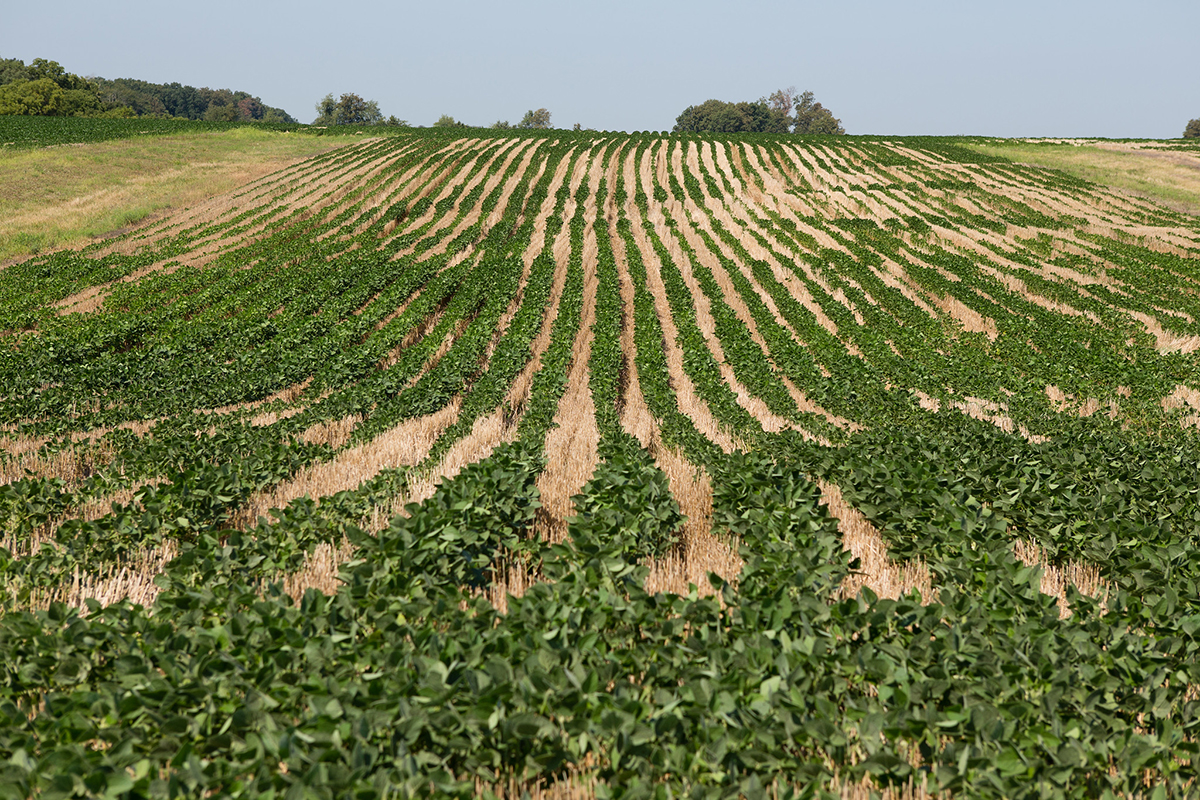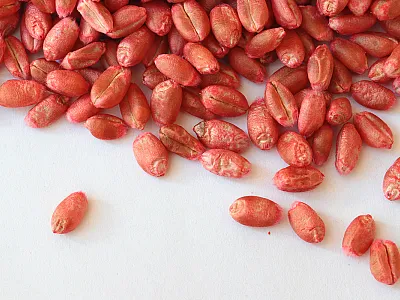Relay-intercropping soybean and winter wheat in Wisconsin


Relay intercropping (RIC) is a cropping system in which a second crop is planted into a standing primary crop before it is harvested, resulting in a period of overlap where both crops grow simultaneously. A RIC system is likely a more viable option to produce two crops in northern climates where double cropping can be difficult to execute. Relay intercropping of soft red winter wheat and soybean offers potential benefits but requires optimized management. A two-year study evaluated the effects of soybean planting date and strip-tillage vs. no-tillage on RIC soybean yield and assessed the impact of strip-tillage on wheat yield.
Earn 1.5 CEUs in Crop Management by reading this article and taking the quiz
Self-study CEU quiz
Earn 1.5 CEUs in Crop Management by taking the quiz for the article. For your convenience, the quiz is printed below. The CEU can be purchased individually, or you can access as part of your Online Classroom Subscription.
1. Which of the following is a documented advantage of relay‐intercropping (RIC) soybean and winter wheat?
a. Guaranteed earlier soybean maturity.
b. Crop diversification.
c. Elimination of all pest problems.
d. No risk of yield penalties.
2. Which of the following is a challenge commonly reported in RIC systems?
a. Increased test weight for wheat.
b. Reduced need for rainfall.
c. Resource competition for light, water, and nutrients.
d. Shorter harvest window for wheat.
3. Where were the field trials for this study conducted?
a. Illinois.
b. Iowa.
c. Minnesota.
d. Wisconsin.
4. In this study, what kind of wheat was planted?
a. Spring wheat.
b. Winter wheat.
c. Fall wheat.
d. Summer wheat.
5. Which tillage system tended to improve RIC soybean yields but reduce wheat yields due to canopy damage?
a. No-till (NT).
b. Strip-till (ST).
c. Conventional tillage (CT).
d. Vertical tillage (VT).
6. In most years, RIC soybean yields were lower than sole-cropped soybean yields.
a. True.
b. False.
7. Fungicide application significantly increased wheat yield in both tillage systems.
a. True.
b. False.
8. The application of fungicide did not significantly affect wheat yields in either year. What reason do the authors use to justify this observation?
a. Low disease pressure potentially due to not enough rainfall.
b. No history of wheat diseases in the study area.
c. Use of resistant varieties.
d. Excessive soil nitrogen.
9. What row spacing was used for wheat planting?
a. 15 in (38 cm).
b. 7.5 in (19.05 cm).
c. 30 in (76 cm).
d. 22 in (56 cm).
10. What row spacing was used for soybean planting?
a. 15 in (38 cm).
b. 7.5 in (19.05 cm).
c. 30 in (76 cm).
d. 22 in (56 cm).
11. What should growers interested in implementing wheat–soybean RIC in northern climates do to reduce early-season competition with wheat and improve soybean yield potential?
a. Plant soybean earlier than recommended.
b. Use wheat varieties with longer maturity.
c. Increase wheat seeding rate.
d. Delay soybean planting until late May.
12. How did wheat yields in RIC compare to sole wheat cropping?
a. Substantially higher.
b. No measurable difference.
c. Slightly lower.
d. Substantially lower (>50% loss)
13. The RIC system was rainfed and did not use supplemental irrigation.
a. True.
b. False.
14. In which year did strip‐till provide a larger benefit to RIC soybean yield compared with no‐till?
a. 2021.
b. 2022.
c. 2023.
d. 2024.
15. Which soybean cropping system provided consistently greater economic returns?
a. Sole crop soybeans.
b. Relay-intercropping.
d. Double cropping.
d. There was no difference in economic returns.
Text © . The authors. CC BY-NC-ND 4.0. Except where otherwise noted, images are subject to copyright. Any reuse without express permission from the copyright owner is prohibited.










